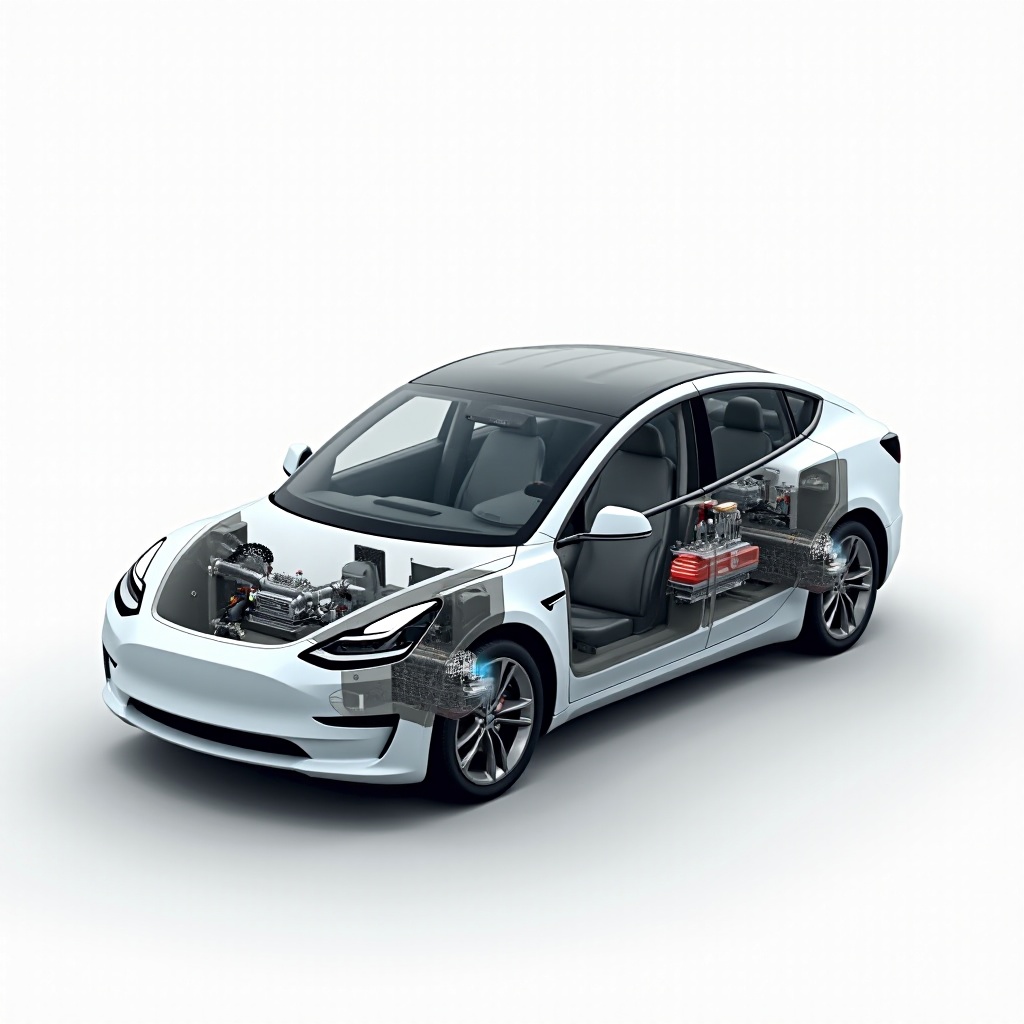Introduction
Owning a Tesla comes with many innovative features designed to enhance your driving experience. Among these features, the heat pump stands out, especially in climates with extreme temperatures. But how can you tell if your Tesla has this feature? In this blog, we’ll explain what a heat pump is, how it works in Tesla vehicles, and how you can identify if your Tesla is equipped with one. Additionally, we’ll explore the benefits, potential issues, and maintenance tips for heat pumps in Tesla vehicles. Let’s dive in and uncover the details you need to know about this advanced technology.

What is a Heat Pump?
A heat pump is a system that transfers heat from one place to another, rather than generating heat by burning fuel. It works on the principle of thermodynamics, moving heat from a cooler area to a warmer area using electrical energy. This process efficiently provides heating and cooling for various applications, including homes and vehicles.
Heat pumps are highly efficient because they leverage the existing heat in the environment. Unlike traditional heating systems that generate heat, heat pumps simply redistribute it. This results in lower energy consumption, making them an eco-friendly alternative. In electric vehicles like Tesla, heat pumps play a crucial role in managing the cabin temperature while maintaining battery efficiency.
Understanding heat pumps is fundamental before delving into how they fit into the design and functionality of Tesla vehicles.

How Heat Pumps Work in Tesla Vehicles
In Tesla vehicles, heat pumps replace the traditional heating and cooling systems. They maximize energy efficiency by utilizing the heat generated by the car’s internal components, such as the battery and electric motor. This reduces the reliance on resistive heating elements which can drain the battery quickly, especially in colder climates.
Here’s a simple breakdown of the process:
1. Heating Mode: The heat pump extracts heat from the outside or from the vehicle’s components and uses it to warm the cabin. This method requires significantly less energy compared to resistive heaters.
2. Cooling Mode: The pump works inversely, removing heat from the cabin and releasing it outside or into other vehicle components to keep the interior cool.
By optimizing this exchange of heat, Tesla’s heat pump systems contribute to extended driving ranges, particularly in adverse weather conditions. The next section will guide you on how to identify if your Tesla has this feature.
Identifying Heat Pumps in Your Tesla
Finding out whether your Tesla is equipped with a heat pump can be a straightforward process if you know what to look for.
Step-by-Step Guide to Checking
- Model and Year: Check your Tesla model and manufacture year. As of late 2020, Tesla included heat pumps in Model 3 and Model Y by default.
- Tesla Account: Log into your Tesla account online or through the Tesla app. Navigate to the ‘Manage Vehicle’ section to find detailed specifications about your vehicle.
- Visual Inspection: Open the front trunk of your Tesla. Heat pumps often have distinctive components which can be visually distinguished by their compact setup and specific layout.
Key Indicators to Look For
- Cabin Heating Speed: If your cabin heats up faster than in older Tesla models, it may indicate the presence of a heat pump.
- Component Layout: Familiarize yourself with images of Tesla heat pumps available in user manuals or Tesla forums to compare with your vehicle’s components.
- Energy Consumption Patterns: Heat pumps are more energy-efficient, so any noticeable improvement in energy consumption for heating might suggest your vehicle has one.
Confirming via Tesla Resources
- User Manual: Refer to the user manual that comes with your Tesla. It includes detailed information about the components and features of your model.
- Customer Support: If you’re still unsure, contact Tesla customer support with your vehicle identification number (VIN). They can provide definitive confirmation.
Being able to identify whether your Tesla has a heat pump can significantly affect how you manage your vehicle’s energy efficiency and comfort during different weather conditions.
Benefits of Heat Pumps in Tesla
Heat pumps offer several advantages that enhance the driving experience, energy efficiency, and environmental sustainability of Tesla vehicles.
Energy Efficiency
Heat pumps are remarkably energy-efficient. They transfer heat instead of generating it. This results in lower energy consumption, which can maximize the driving range, especially in cold weather when traditional heating systems can drain the battery quickly.
Environmental Impact
By reducing energy consumption, heat pumps help lower the carbon footprint of electric vehicles. This is particularly significant in a Tesla as it aligns with the company’s goal of promoting sustainable and environmentally friendly transportation.
Enhanced Comfort and Performance
Heat pumps provide rapid and consistent heating and cooling, contributing to a more comfortable cabin environment. This enhanced thermal management also ensures that the battery operates within optimal temperature ranges, preserving its longevity and performance.
With these benefits, incorporating heat pumps into Tesla vehicles underscores their commitment to advanced, efficient, and eco-conscious automotive technology.

Common Issues and Maintenance of Heat Pumps
Although heat pumps are efficient and advantageous, they are not without potential issues. Understanding these can help you better maintain your Tesla’s system.
Potential Drawbacks
- Initial Costs: The inclusion of a heat pump in a Tesla increases the initial cost. However, this is often offset by the savings in energy consumption over time.
- Complexity: Heat pumps are more complex systems compared to traditional resistive heaters, which can make repair and replacement more complicated and potentially more costly.
Regular Maintenance Tips
- Routine Checks: Regularly inspect the heat pump components for any signs of wear or damage.
- Software Updates: Ensure your Tesla’s software is regularly updated as updates often include improvements and fixes for the heat pump system.
- Professional Servicing: Schedule routine maintenance with Tesla service centers to keep the system in optimal condition.
Troubleshooting Common Problems
- Temperature Fluctuations: If you notice irregular temperature changes, it may indicate a problem with the heat pump. Check for any error messages on the vehicle’s display and consult the user manual or Tesla support.
- Noisy Operation: Unusual noises from the heat pump system should be inspected promptly to prevent further damage.
- Inefficiency: If the system seems to be consuming more energy than usual, this could point to an issue that needs addressing.
Maintaining your heat pump ensures a comfortable and efficient driving experience, answering concerns before they become larger problems.
Conclusion
Understanding whether your Tesla has a heat pump and knowing how to maintain it can significantly improve your driving experience. From energy efficiency and environmental impact to enhanced comfort, heat pumps bring a wealth of benefits to Tesla vehicles. Keeping an eye on potential issues and ensuring regular maintenance will help you get the most out of this cutting-edge technology.
Frequently Asked Questions
How do I know if my Tesla Model 3 has a heat pump?
Check the manufacture year; most Model 3s from late 2020 onwards are equipped with heat pumps. You can also inspect the front trunk or contact Tesla support for confirmation.
Which Tesla models come equipped with heat pumps by default?
As of late 2020, Tesla Model 3 and Model Y come equipped with heat pumps by default. Future models are likely to include this feature as well.
Are heat pumps in Tesla vehicles reliable in extreme weather conditions?
Yes, heat pumps in Tesla vehicles are designed to perform reliably in a range of weather conditions. They provide efficient heating and cooling, contributing to overall vehicle performance and comfort even in extreme climates.


